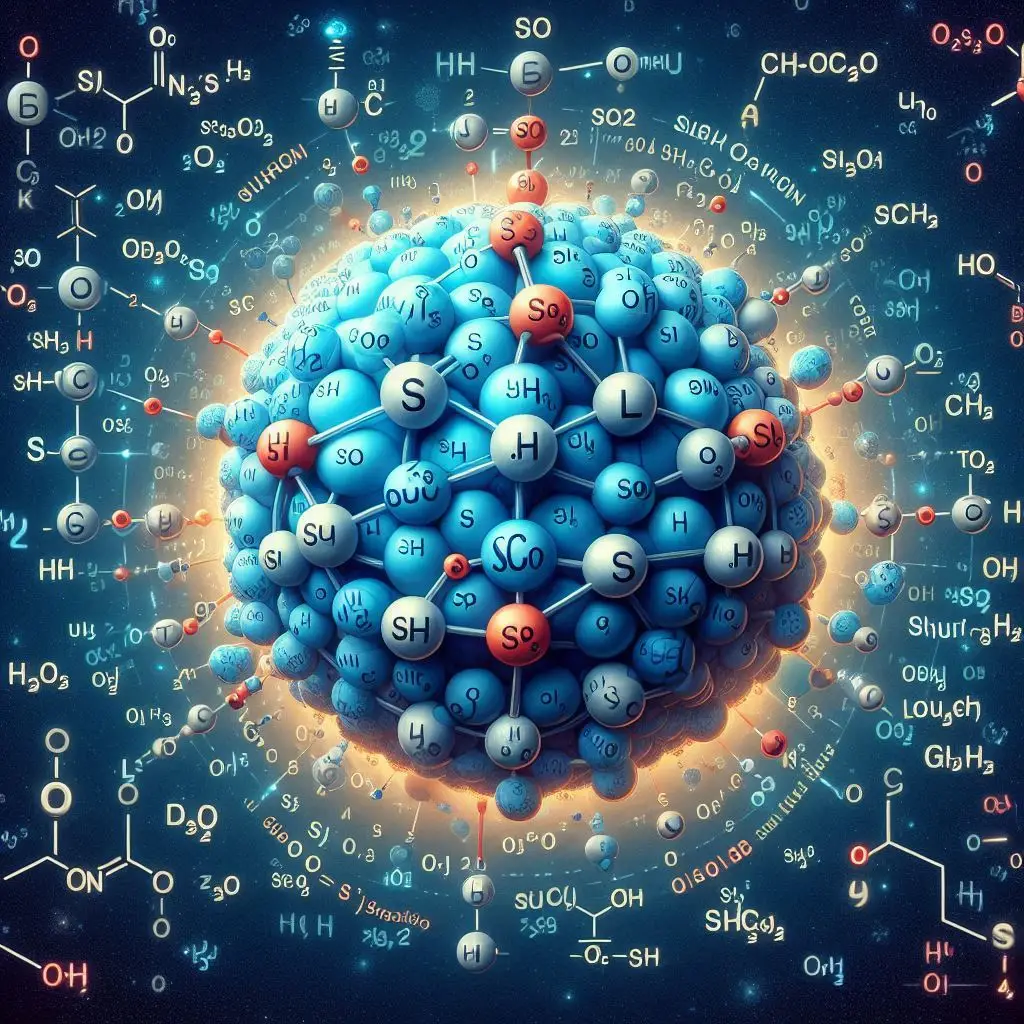
Valency of sulphur in So2
The valency of sulphur in sulfur dioxide (SO2) is a crucial component in comprehending the bonding and chemical behavior of this molecule. We must examine the chemical makeup, electron configuration, and bonding properties of sulfur dioxide to fully address the valency of sulfur in SO2.
Sulfur in sulfur dioxide (SO2) has a valency of +4. The number of electrons that sulfur shares in its bonds with oxygen—including sigma and pi bonds—as well as the lone pairs on the sulfur atom influence its valency. Clarifying the chemical reactivity and behavior of this significant compound—which has consequences for industrial applications, atmospheric chemistry, and environmental processes—requires an understanding of the valency of sulfur in SO2.
Sulfur's valency in sulfur dioxide (SO2) is a complex idea with wide-ranging effects. Knowing the valency of sulfur in SO2 is essential for several reasons, including its impact on industrial operations, air quality, and atmospheric chemistry. It provides the groundwork for resolving environmental issues, safeguarding public health, and maximizing industrial uses. It illustrates the complex relationship between the molecular details of chemical compounds and their wider effects on society.
One sulfur atom and two oxygen atoms make up the chemical molecule known as sulfur dioxide. SO2 is its molecular formula. A linear molecule structure is produced when the central sulfur atom makes double bonds with each of the oxygen atoms. With two lone pairs on the sulfur atom, the shared electron pairs between sulfur and oxygen are shown in the Lewis structure of SO2.
Sulfur has an electron configuration of 1s² 2s² 2p⁶ 3s² 3p⁴. Sulfur hybridizes to create sp² hybrid orbitals in sulfur dioxide. One 3s orbital and two 3p orbitals are mixed during this hybridization process to produce three sp² hybrid orbitals. The orbitals of the oxygen atoms overlap with these sp² hybrid orbitals to generate pi (π) and sigma (σ) bonds.
The head-on overlap of orbitals creates sigma bonds, which give atoms a solid and long-lasting link. Two sigma bonds are generated in SO2 between each oxygen atom and sulfur. Furthermore, the molecule's general stability is enhanced by the existence of pi bonds, which are created when p orbitals overlap side to side. The unique chemical structure and reactivity of sulfur dioxide are attributed to the existence of both sigma and pi bonds.
Examining sulfur's capacity to form bonds and exchange electrons helps us understand its valency in SO2. An atom's valency, or the amount of electrons it can receive, lose, or share to reach a stable electron configuration, is a measure of its combining ability. Under sulfur dioxide conditions, sulfur has a valency of +4.
The amount of electrons that sulfur shares in the bonds must be taken into account in order to calculate its valency. Sulfur adds one electron to every sigma bond and an additional electron to every pi bond. Sulfur adds a total of three electrons via bonding, including two sigma bonds and one pi bond in SO2. Sulfur, however, contains two more lone pairs of electrons, increasing its valence electron count by two. As a result, there are five electrons total in SO2 that are engaged in bonding and lone pairs with sulfur.
Given that sulfur possesses six valence electrons in its ground-state electron configuration, the total valence of sulfur may be calculated as follows: five electrons participating in bonding and lone pairs plus one unpaired electron. Sulfur shares electrons with oxygen nevertheless, forming two double bonds, hence its effective valency in SO2 is +4.
knowledge the chemical characteristics of SO2 requires a knowledge of the valency of sulfur in the molecule. Because the sulfur atom has lone pairs, sulfur dioxide is a very reactive chemical that easily reacts with other compounds. It takes part in redox processes, in which sulfur undergoes an oxidation state shift, with ease.
Understanding the valency of sulfur in sulfur dioxide (SO2) is crucial because of the environmental and industrial relevance of this substance, in addition to its chemical features. A ubiquitous substance with significant effects on atmospheric chemistry is sulfur dioxide. It is the result of both human activity, like as burning fossil fuels, and a number of natural phenomena, such as volcanic eruptions. Burning fuels that contain sulfur releases sulfur dioxide into the atmosphere, which aggravates air pollution and causes acid rain.
Understanding the effect of SO2 on human health also depends critically on the valency of sulfur in this gas. Sulfur dioxide may irritate the eyes, nose, and throat in addition to having negative effects on the respiratory system. Extended exposure to high sulfur dioxide concentrations is linked to respiratory problems and may make pre-existing illnesses like asthma worse. Thus, it becomes essential to monitor and control sulfur dioxide emissions to reduce air quality issues and protect public health.
Sulfur dioxide is also a necessary component of industrial processes, especially those that produce sulfuric acid. Sulfuric acid is created when sulfur dioxide is catalytically converted to sulfur trioxide and then reacts with water. This acid is an essential chemical used in many different sectors, such as the manufacturing of chemicals, detergents, and fertilizers. To ensure the effectiveness of sulfuric acid production and to optimize these industrial operations, it is necessary to comprehend the valency of sulfur in SO2.
Sulfur's valency in SO2, which is +4, emphasizes how dynamic sulfur is in many chemical situations. Because of its flexibility, sulfur may participate in a wide range of reactions, which adds to the compounds that include sulfur's versatility. Investigating the valency of sulfur in sulfur dioxide (SO2) is not only a theoretical chemistry exercise; it is also a means of deciphering the complex interrelationships between molecular structure, reactivity, and the many uses and effects of SO2 in our industries and environment.

